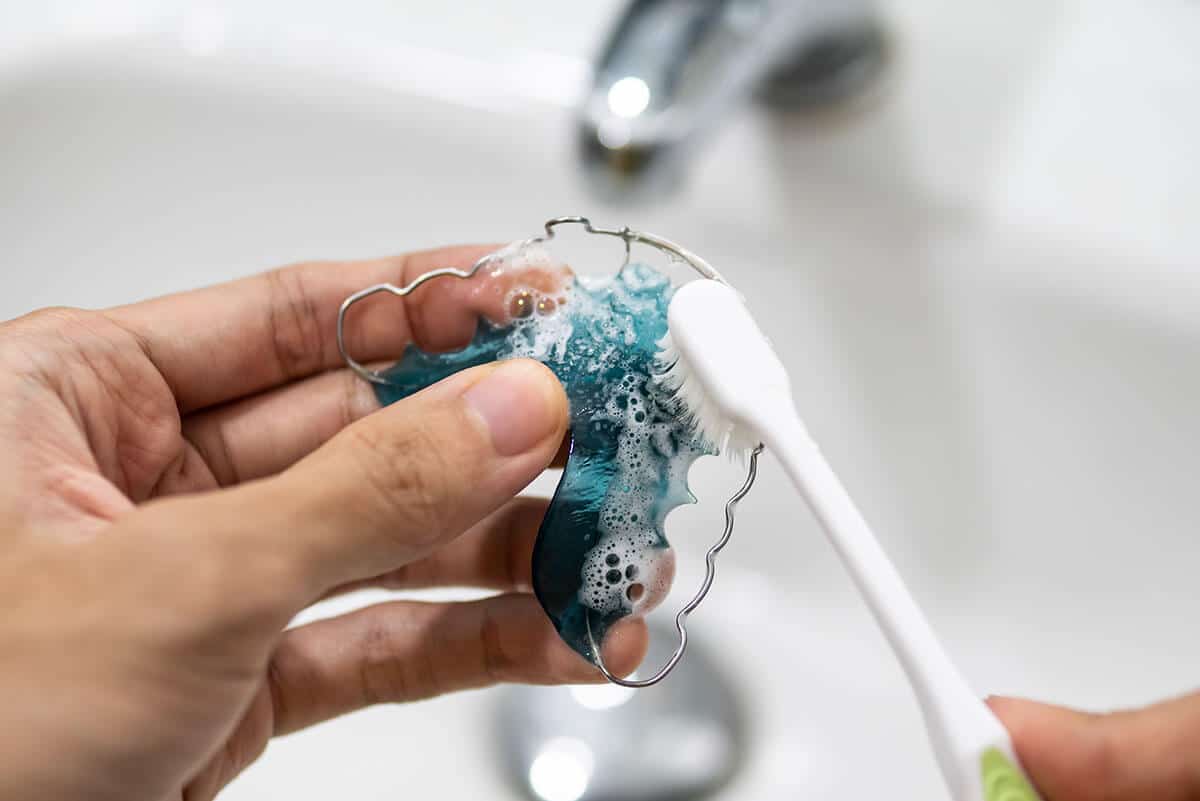Hello, retainer user! Welcome to our ultimate guide on how to keep your retainer in tip-top shape. If you’re using a retainer, you’re probably well aware of how crucial it is to keep it clean. A sparkling clean retainer doesn’t just enhance your smile; it also plays a significant role in your overall dental health.
In this piece, we’re going to cover everything you need to know about cleaning your retainer effectively. Whether you’re new to the retainer scene or you’ve been rocking one for years, we have some handy tips and techniques to help ensure your retainer remains in pristine condition, avoiding any pesky bacteria.
So, pick up your retainer case, and let’s jump into learning the best practices for keeping your retainer sparkling clean and ensuring your smile stays as vibrant as ever!
Why Clean Retainers Are Important
Keeping your retainer clean goes beyond just making sure it looks good; it’s vital for your dental health overall. Here’s why keeping that retainer clean matters so much:
- Battles Bacteria Growth: Considering the amount of time your retainer spends in your mouth, it’s practically a paradise for bacteria. Failing to clean it regularly allows these bacteria to flourish, potentially leading to unpleasant odors, cavities, and even gum disease.
- Prevents Plaque Build-Up: Just like your teeth, your retainer can become a home for plaque, a sticky layer of bacteria. Plaque that’s not addressed can damage tooth enamel and lead to cavities. A clean retainer means you’re less likely to face plaque problems.
- Keeps the Retainer in Top Shape: Whether your retainer is plastic or metal, it can wear down over time without proper care. Regular cleaning maintains your retainer’s condition, making sure it continues to do its job in keeping your smile straight.
- Increases Comfort: Wearing a clean retainer is simply more comfortable. A retainer clogged with food bits and bacteria can irritate and cause discomfort in your mouth. Clean retainers make for a much more enjoyable orthodontic experience.
In short, routinely cleaning your retainer is crucial for good oral hygiene, preserving your retainer’s effectiveness, and making sure your experience with orthodontic treatment is as comfortable as possible.
How To Clean Your Retainer
Ensuring your retainer is clean is key to upholding excellent oral health and extending the life of this important orthodontic tool. Follow this detailed guide to clean your retainer effectively:
- Rinse Thoroughly: Begin by rinsing your retainer under warm (not hot) water to wash away any loose food bits or debris. Hot water can warp the material of your retainer, so it’s best to stick to lukewarm temperatures.
- Brush Gently: With a soft-bristled toothbrush and a mild toothpaste, softly brush every part of your retainer. Target all angles, including the front, back, and sides, paying special attention to any narrow spaces or grooves where bacteria love to hide.
- Soak for Cleanliness: Post-brushing, immerse your retainer in a denture cleaner or a homemade solution of water and white vinegar, mixed in equal parts. Allow it to soak for about 15-30 minutes. This step aids in dissolving stubborn stains and eliminating bacteria.
- Rinse Once More: After soaking, rinse your retainer under running water to get rid of any leftover cleaning solution. It’s crucial to ensure no vinegar or cleaner residue remains on the retainer.
- Dry Properly: Dry your retainer by patting it with a clean cloth or letting it air dry before putting it back in your mouth. Steer clear of paper towels or tissues that might leave lint or fibers behind.
Cleaning your retainer daily is vital to prevent the buildup of bacteria and keep it smelling and tasting fresh. Also, when you’re not wearing your retainer, store it in its case to avoid damage and maintain cleanliness until its next use. With diligent cleaning and care, your retainer will remain a reliable ally in keeping your teeth aligned and your smile bright.
Conclusion
Maintaining a clean retainer is crucial for your oral health and the effectiveness of your treatment. By adhering to the cleaning guidelines shared earlier, you can keep your smile both fresh and healthy.
Frequent cleaning wards off bacteria that could lead to tooth decay and gum disease. Moreover, it guarantees that your retainer is doing its job correctly, helping to keep your teeth aligned and supporting your orthodontic care.
Make these cleaning practices a part of your everyday routine to look after your retainer. And don’t forget, keeping up with regular appointments with your orthodontist is key to tracking your treatment progress.
With the right attention and care, your retainer will continue to be a vital player in maintaining your smile. Emphasize cleanliness to safeguard your oral health and achieve successful treatment outcomes.

